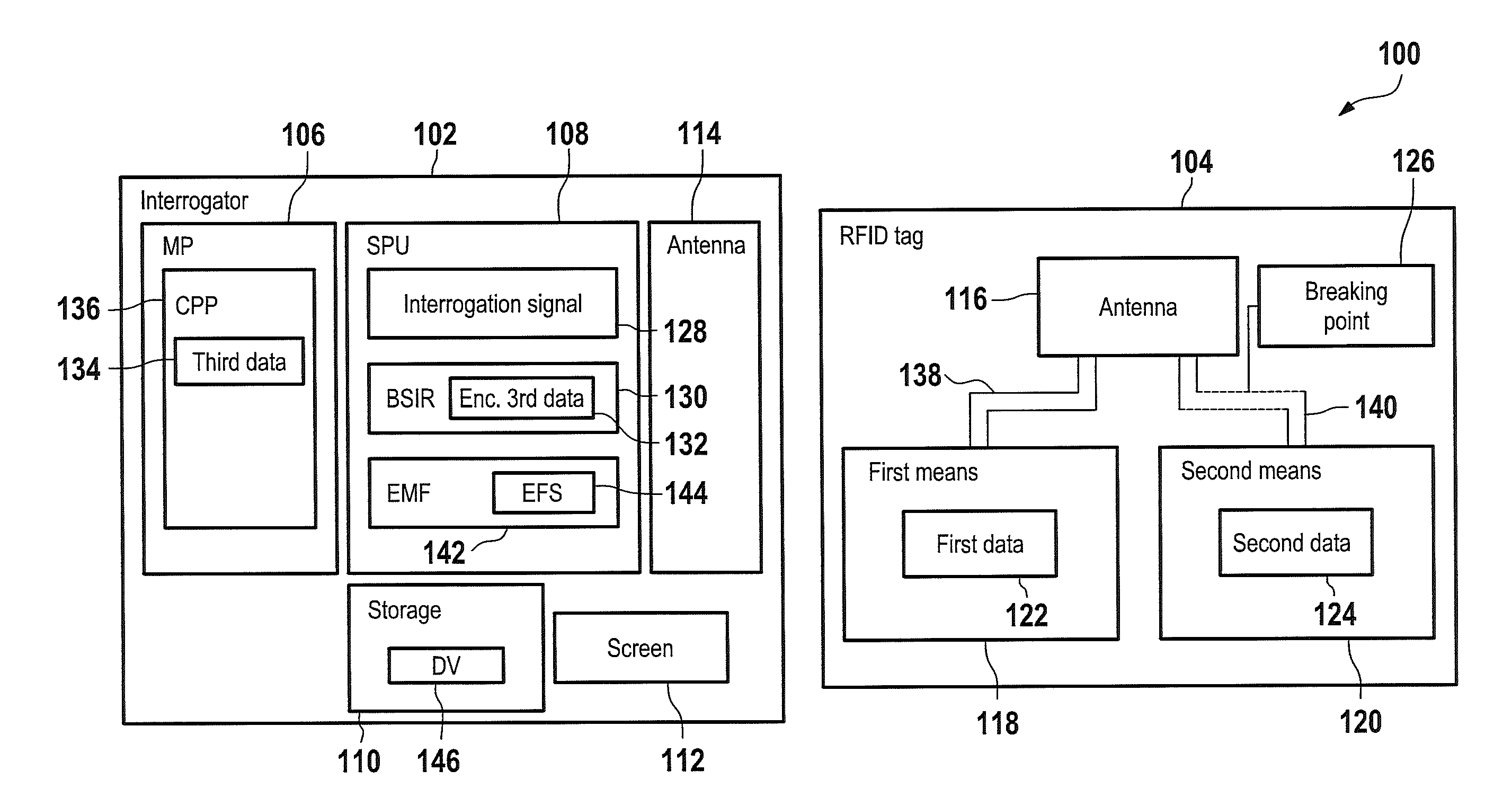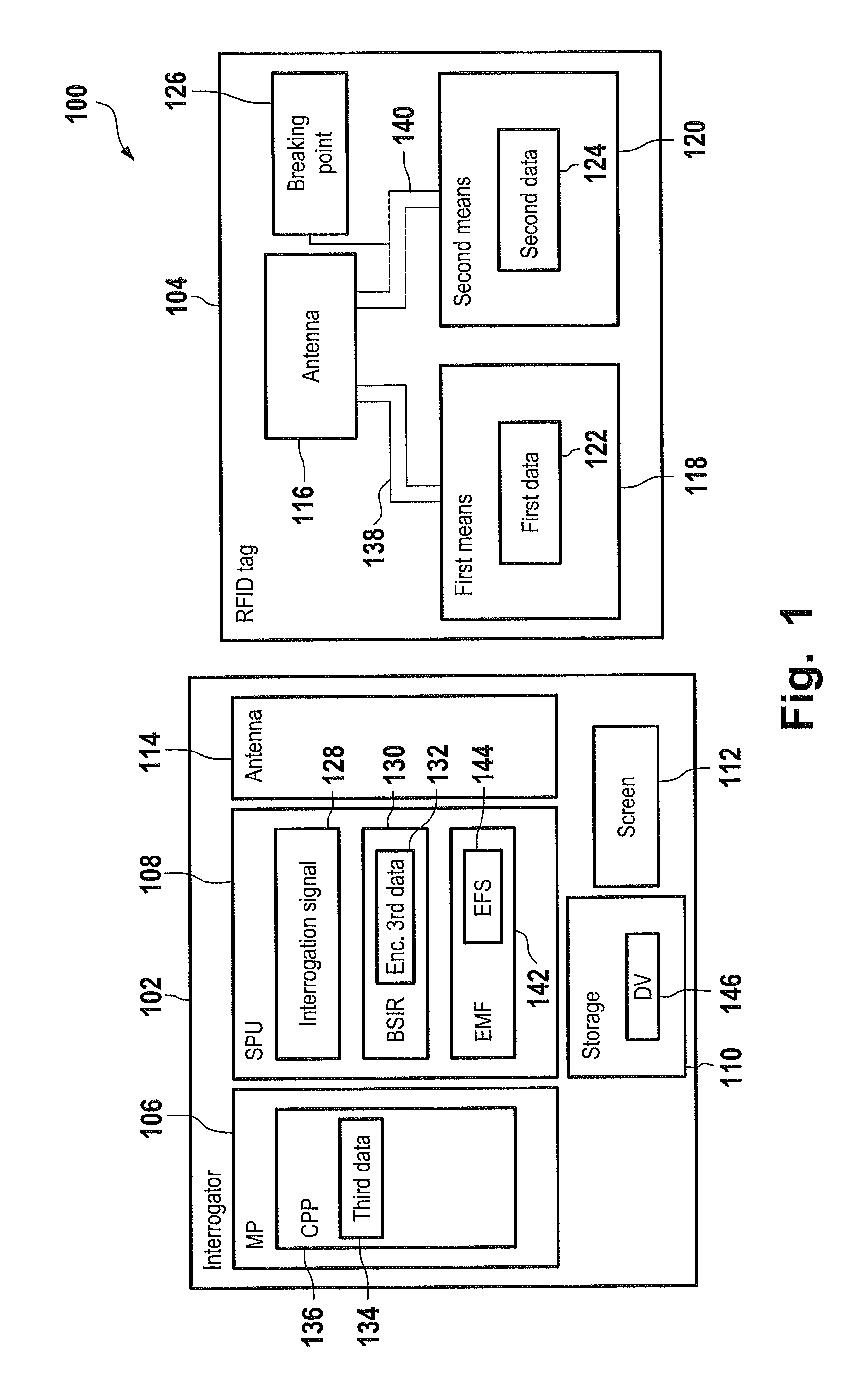Chipless RFID tag and method for communicating with the RFID tag
a technology of rfid tags and chips, applied in the direction of instruments, mechanical actuation of burglar alarms, near-field systems using receivers, etc., can solve the problems of limited magnetic strips can be read, and the effective range at which barcodes can be reliably read is typically not better than a few centimeters
- Summary
- Abstract
- Description
- Claims
- Application Information
AI Technical Summary
Problems solved by technology
Method used
Image
Examples
Embodiment Construction
[0041]The present invention is directed to a RFID tag, a method, a computer program and to an interrogator.
[0042]In accordance with an embodiment of the invention, there is provided a RFID tag comprising an antenna, first means for storing first data, and second means for storing second data. The first means and the second means are electrically connected in parallel to the antenna and the second data is complementary to the first data.
[0043]The first storage means hold first data which is the data of interest and which is to be interrogated by use of a radio frequency signal via an interrogator. The first data can, e.g., correspond to an identifier or a code. However, as the second data is complementary to the first data and as both the first and the second storage means are connected to the antenna, the RFID tag responds with a signal that corresponds to the combination of the first and second data. Hence the RFID tag does not disclose the first data when interrogated as long as t...
PUM
 Login to View More
Login to View More Abstract
Description
Claims
Application Information
 Login to View More
Login to View More - R&D
- Intellectual Property
- Life Sciences
- Materials
- Tech Scout
- Unparalleled Data Quality
- Higher Quality Content
- 60% Fewer Hallucinations
Browse by: Latest US Patents, China's latest patents, Technical Efficacy Thesaurus, Application Domain, Technology Topic, Popular Technical Reports.
© 2025 PatSnap. All rights reserved.Legal|Privacy policy|Modern Slavery Act Transparency Statement|Sitemap|About US| Contact US: help@patsnap.com



